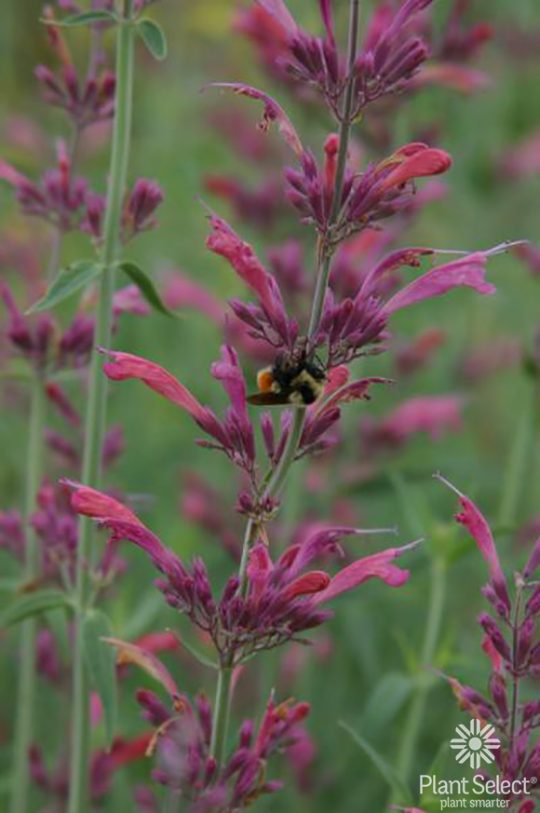By Eri Matsumura

We are now in the dog days of Summer, but you don’t need us to tell you that. You can feel it in the mornings, as the sun wakes up to greet you. You scurry around to water all of the plants, making sure not to forget the potted geraniums on the porch or that one tomato in the corner of the bed that the drip system can’t quite reach. You’re sweating at 8 am, longing for a breeze or for another one of those cool spring mornings that feels like a distant memory. You only just woke up, and you’re already thinking about how you’re going to have to water again in the afternoon or your plants might not make it in this dry heat. It’s time to become water wise.
Aside from saving money on your rising water bill, exercising water wise practices in the garden can save time and benefits your plants and the environment. Being water wise includes being mindful of how you water, what you plant, and making some key adjustments throughout the garden.
Watering

Savvy gardeners know that the best time to water is in the early mornings and late evenings. By skipping the hottest part of the day you limit water evaporation, ensuring water makes it down to the roots. To make each drop count, avoid frequent shallow waterings. Instead, space your waterings out, but make sure they soak deep. This encourages a deeper root system and keeps the soil wetter for longer. Set a timer if hand watering or change the drip to run longer.
Focus on where you are applying water. Always water the ground under the plant’s leaves and not the foliage. Overhead watering can waste water and encourage the development of fungal diseases. On newly installed plants, watering right at the base of the plants is best, since the roots haven’t grown out yet. For established plants and trees, however, watering at the base is inefficient, as most of the roots have grown beyond the edge of the foliage canopy – change your watering habits accordingly.
Finally, pay attention to whether or not your plants actually need to be watered. Some plants will droop in response to the summer heat as a defense to minimize water loss. Check the soil first before rushing to grab the watering can, if the first couple inches of soil is moist, they are okay and will perk up once things cool down in the evening!

Another way to start being water wise is to collect water. Setting up a rain barrel is a simple way to extend those sparse afternoon showers. Here in Colorado, residents are allowed to have up to two rain barrels. Hook up a hose and that’s free water! If getting a rain barrel seems like a big step, you can start smaller by collecting water in everyday routines. Simple steps like having a bowl in the sink to catch the water from rinsing summer fruit, the pasta water, or even from hand washing can save gallons a day. Depending on zoning restrictions where you live, you can also look into adding a gray water system to your house.
Plants and Planting
Group plants in your landscape by their water needs. There are plenty of low water flowering plants and shrubs available for sun and shade. A good place to start is by looking into plants that are native to Colorado. Many native plants can be drought tolerant and can take the baking sun. You can gather tons of information and inspiration from resources like Plant Select or the City of Fort Collins Utilities Xeriscape Program.

Plant Select®

Plant Select®

Creating shade is an essential part of garden planning. Having shade can cool the yard and the home by 6 degrees. Shading the ground can drastically help with water retention. Plant taller and fuller plants to the south of smaller and younger plants to shade out the ground.
Depending on your plant selection, you can improve the native soil before planting by adding soil amendments to maximize water efficiency. Prepare your flower beds by mixing in compost, peat moss, or other soil conditioners. Amending the Colorado clay soil will increase nutrients, water retention, and aeration for drainage. After planting, consider adding mulch to bare areas to again, help reduce water evaporation.
Tools and Materials
Equip yourself with some basic tools and your water-saving efforts will pay off. Simple changes like using a soaker hose, a hose wand with a shut off nozzle, or adding ollas to your garden beds can really help conserve water. Keep a rake on hand to loosen the topsoil for better water absorption and disrupt weeds from competing with the plants. Shade structures like sails and awnings should also be considered in your landscape.
With record highs every week this summer, the importance of being water wise is crucial to the happiness of your garden and your pockets. Paying attention to your watering habits, plant selection, and tools will result in more time relaxing in your garden oasis. It’s 8 am and the sun reaches higher into the sky. But this time you’re not in a rush to beat the heat with your hose. It’s 8 am and you have an iced coffee, a timer on for your soaker hose, and you’re picking fresh cherry tomatoes for your breakfast.
Originally published on July 1st, 2024.
